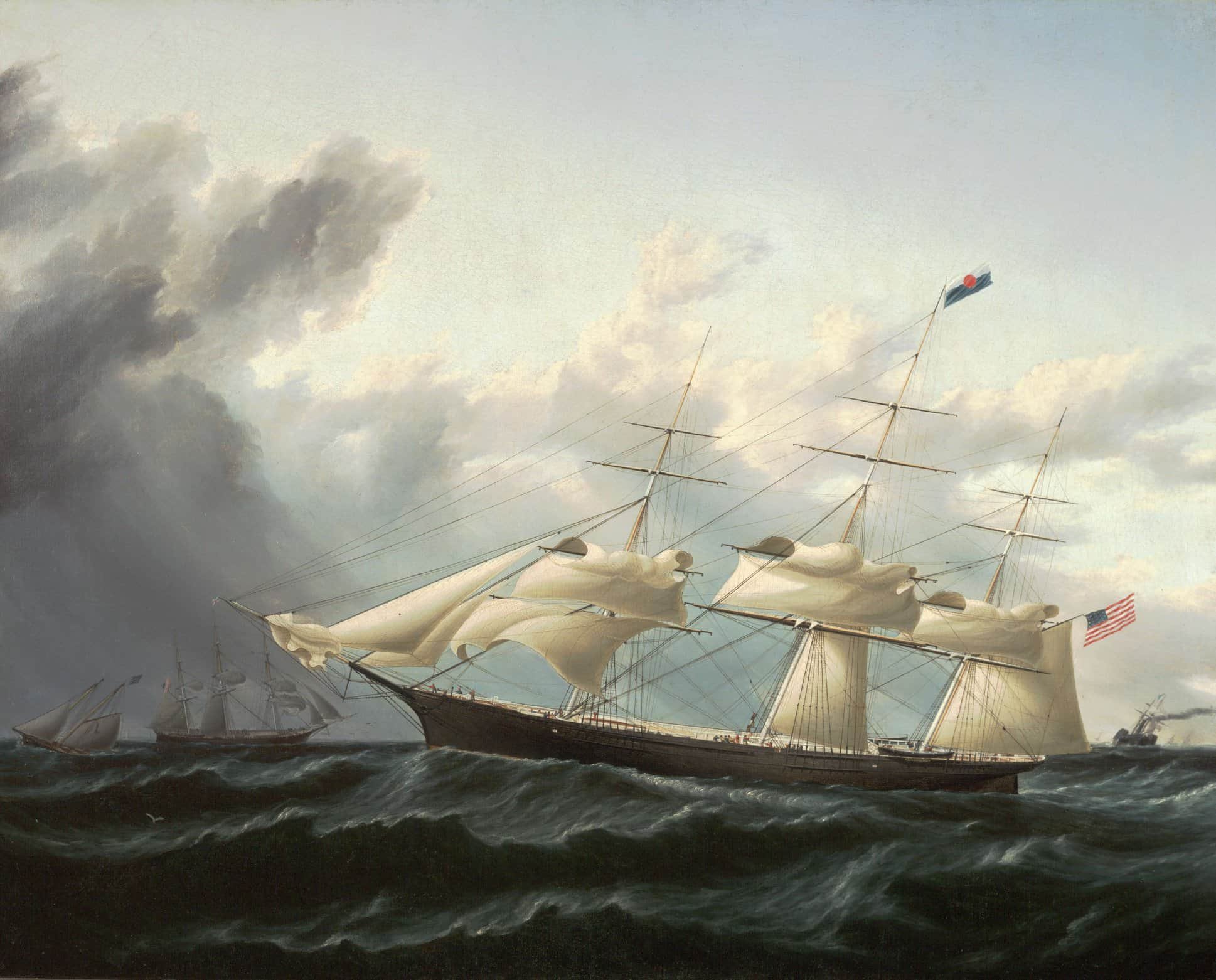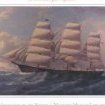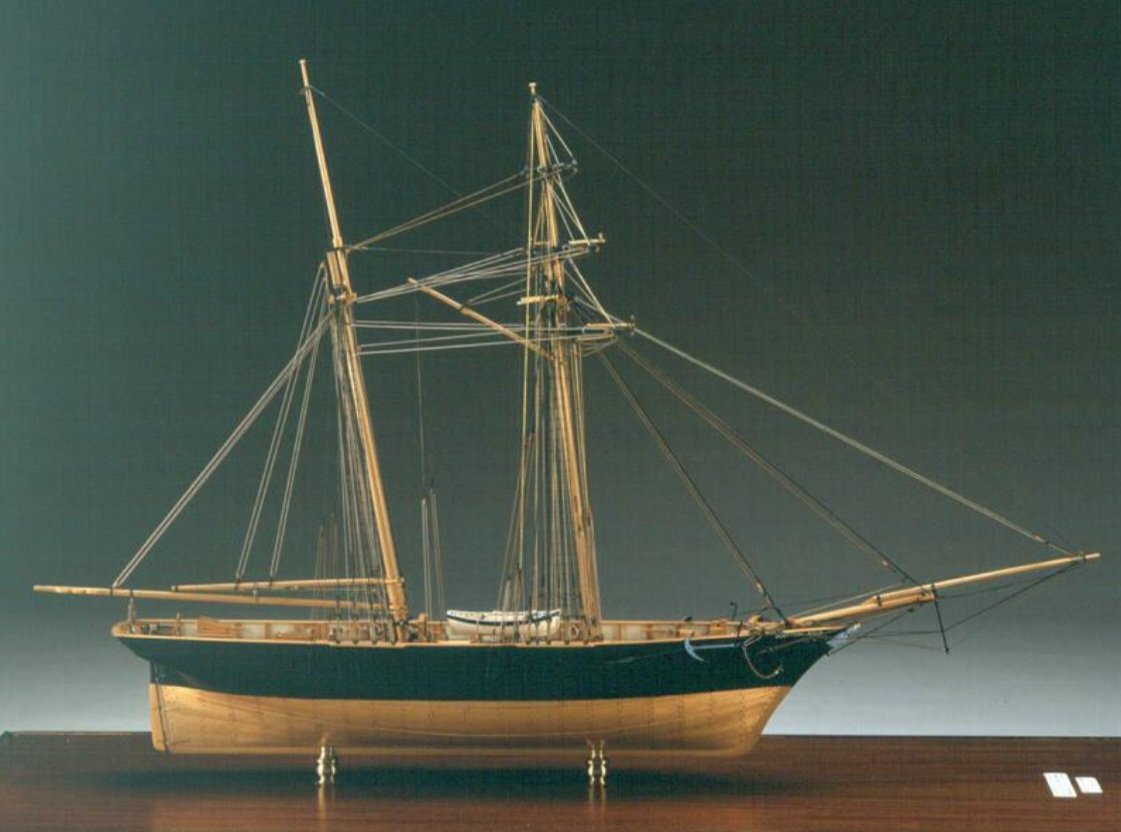-
Posts
2,168 -
Joined
-
Last visited
Content Type
Profiles
Forums
Gallery
Events
Everything posted by ClipperFan
-
@BANYAN Pat, in the late 70s I worked for a while clearing trees for large housing developments. Occasionally we resorted to block & tackle to make sure large trees didn't fall on homes. Being familiar with how lines can bind, I say the left center illustration with dual outside chains is definitely the safer choice. The other one with a centrally mounted hoist chain gets offset to the right. A situation which could easily lead to binding, since the central chain appears to cross over to the other line. and the right side block has to accommodate two chains. The other arrangement is simpler and cleaner with no chance of crossing eachother. Of course, it would still need Rob's wishbone thingy, since I can't remember the proper nautical term.
-
@BANYAN Pat, where I see Rob's 50 years' experience translates to his model building prowess is in how he recreates actual working vessels and not just pretty mantlepiece decorations. We've discovered many incongruities in commercially produced plans. This latest correction by Rob is just one of many. He points out how the metal band supporting a yardarm would bind without a device to prevent it from doing so. Simple, yet overlooked. Another one is the long, wide lubbers hole on solid tops. It makes sense both for ease of rigging and to allow crew better access. Yet commercially produced plans still have tiny square openings. You'll notice too, Stag Hound has her twin navel hoods supporting her leaping dog figurehead and acting as a foundation for her bowsprit-jibboom above. It's been on McKay ships since launch but only recently been rediscovered.
-
@BANYAN 1833 Ann McKim, Baltimore, MD, 143' 493 tons 3 masts was launched. She's considered America's first clipper. 1845 clipper Rainbow, 1846 clipper Sea Witch, 1849 clipper Oriental 183' 1003 tons was first American clipper to carry tea from China after the Navigation Laws were repealed. Aberdeen packet vessel Scottish Maid 89.25' 142 tons, 2 masted topsail schooner was launched in 1839, six years later then the first American clipper. Even the British acknowledge that for a decade Yankee clippers dominated the Chinese tea trade. Regardless, British clippers, as witnessed by the svelte tea clipper Cutty Sark were incredibly beautiful. Sadly the American Civil War was responsible for ending Yankee dominance.
-
@rwiederrich I total Stag Hound main mast height as 209'. Cornelius McKay's handwritten specs say her main mast height deck to truck is 166'. So her main mast is 44' below deck. Since only the lowermost of each mast is affected, it means her main mast is 44' to her main top as it's 88' total. Main mast: lower 88' + hound 14' + top 37' (51' - 14') + hound 9'6" + t'gallant 18'6" (28' - 9'6") + royal 19' + skysail 15' + pole 9' = 210' Fore mast: lower 82' + hound 13' + top 33' (46' - 13') + hound 9' + t'gallant 16' (25' - 9') + royal 17' + skysail 13' + pole 7' = 190' Mizzen mast: lower 78' + hound 12' + top 28' (40' - 12') + hound 8' + t'gallant 14' (22' - 8') + royal 16' + skysail 11' + pole 6' = 173' Fore mast 82' gives 38' to fore mast top while mizzen is 78' resulting in 34' to her mizzen top. As her fore mast totals 190' -44' = 146' deck to truck and her mizzen mast is 173' -44' = 129' deck to truck. I hope you find this helpful; if any of these calculations are wrong, feel free to correct them. FYI: only her fore and main mast are fished, meaning made masts. Her mizzen was a solid stick. Fore was 32.5" base and 29.5" at truss band, main was 33" base and 30" at truss band and mizzen was 26" base -3" would be 23" at truss band.
-
While discussing unusual deck arrangements, I read that the Donald McKay had a semi-circular glass door entrance to her aft dining room which was described as having a corresponding extended roof shelteriing above. This leads me to conclude her single catwalk was centrally mounted and intersected this sheltering semi-circular roof. Since she was a very spacious vessel intended more for Australian emigration service, she could be considered a clipper packet.
-
Rob, no surprise that I agree with you. McKay's clipper Lightning was the first to pioneer McKay's radical raked keel which for 60' had a gradually curving stem which never had a sharp angle like other clippers of her day. This controversial design so flustered English shipwrights that they attached extra hull forms to fill her out. Fortunately that crap washed off and she performed as McKay intended. This ship was first to pioneer raised catwalk allowing crew to traverse more quickly.
-
@Sailor1234567890 Rob may not agree with my recommendation but here's my answer and why. Based on her two record 89 day performances, anchor to anchor from New York to San Francisco, CA there was no other extreme California clipper that could match the inimitable Boston built 1851 Flying Cloud. Her records stood for over a century and when it was finally beaten, it was done by a racing yacht and not a fully laden merchant sailing ship. To that I say "Apples and oranges." Only one other clipper, Mystic built Andrew Jackson matched her time from New York to the Golden Gate San Francisco Bay. But due to inability to get a Pilot, she waited another day before she could dock.
-
Rob, that makes eminent sense since I'm sure Donald McKay was building on his prior Atlantic Packet building practice. Not to mention, he was contractually committed to completely finishing her in 90 days! Another astounding fact confirmed in Cornelius McKay's letter to capt. Arthur H Clark. Time would have been of the essence.
-
@Veszett Roka @rwiederrich @Vladimir_Wairoa and I first joined together to do an exhaustive reconstruction of Donald McKay's final medium clipper Glory of the Seas. That effort began in 2021, although Rob and I had individually been studying her for over a dozen years earlier. Our research was aided and guided by Michael Mjelde, author of three books on her. Now we're using the knowledge gained from that project to resurrect McKay's Stag Hound "Pioneer craft of the California Clipper Fleet" as described by his son Cornelius. In Rob's log you'll see many pics of the gorgeous 1850 Staghound model created by Cornelius directly from the ship's lines taken from off the molding loft floor as she was being built! Thanks to the generosity of curators at The Old State House Museum, Boston, I was sent a copy of the entire 4 page letter written by Cornelius to Capt Arthur H Clark, Nov 18th, 1896. That letter confirmed existence of a drawing that Cornelius made at the same time he crafted his magnificent model. Only recently, MIT sent me a copy of that drawing. It's a 1:96th scale precise plan of Staghound with starboard sheer, fore & aft body, profile from below and small sail plan in lower right corner. When I enhanced colors to better see it, I discovered that besides dark blue, some lines were drawn in red! I paid $25.00 to get a clean pdf which required me to sign a confidentiality agreement not to publish it, although I was given permission to share it with modelers as long as they agree not to publish it. Since none of the other sources: Hall, Chappelle, MacGregor or Crothers got their plans right, it's safe to assume none of them ever saw the Cornelius McKay lines! That means this might be the first time this plan has come to light in over a Century!! As soon as possible, once I have free time, I plan to precisely trace these plans and share them here, giving full credit to the MIT Museum as the source. To sum up: our group doesn't build models, we create museum scale replicas.
-
Rob, just to clarify how these specs have been written. Dimensions were given before the bowsprit cap: 24' and after it: 18' + 15' +5' end, then there's the wythe, after them (perhaps the 5' end doubled as the spar support for the wythe too): 18' + 4' end. A total of 84' spars + 1'6" for the cap = 85'6". Jibboom passes through the cap but dimensions are given after it, so it has to be added to get precise numbers. Reviewing the small sail plan, the entire bowsprit-jibbooms combo appear to be equal to the height of the foremast up to her crosstrees.
-
Rob, I cannot understate the exciting discoveries made unearthing three hugely significant historic items. Cornelius McKay has left us the perfect blueprint to reconstruct his father Donald's "Pioneer craft of the California Clipper Fleet." We have his model, his 4 page letter with exacting specs and now the precise 1850 lines and sail plan of Stag Hound as well. What a gift, literally from 175 years ago! As with McKay's final medium clipper Glory of the Seas where we had such priceless documents and images courtesy of Michael Mjelde, you're now reconstructing his very first extreme clipper Stag Hound. You're literally building the Alpha and Omega of McKay's fabulous clippers!!
-
Rob, I never checked to see if you received your copy of the original 1851 Cornelius McKay Staghound drawing which accompanied his famous model. If you did, then look closely at the small sail plan depiction in the lower right corner. You'll see that her bowsprit, jibboom, flying jibboom is immensely long. Much longer than any other McKay clipper. I've attached an excerpt of his handwritten specs which confirm accuracy of the sail plan with her incredibly long one-piece jib-flying jibboom. Her bowsprit was 24' to the cap, outboard of the cap, jibboom was 18', plus 15' with 5' end and an additional flying jibboom was even 18' beyond that with 4' end. This was a single very long spar. Totaling all specs give us 60' outboard of the cap added to 24' bowsprit with 18" cap puts this out 85'6"! FYI: this is also the source of the fact that her bowsprit steeve was 4.2" not 4.5" and her mainmast was 166' high from deck to truck, incidentally 8' higher than that of the Flying Cloud.
-
@sheepsail Julie, a decade ago the Mariner's Museum and Park, Newport News, VA had a popular exhibit titled "B is for Buttersworth, F is for Forgery" wherein they hid a forgery amidst authentic Buttersworth pieces. They had the exhibit to boost attendance and apparently it worked. As for the few works we discuss, I would be surprised to learn that any we refer to: Staghound, from South Street Seaport, NY, Flying Fish at Vallejo Gallery, Sovereign of the Seas & Great Republic at the Old State House, Boston and Flying Cloud listed by Barron's Auctions could be forgeries. I am curious though, does the book you refer to have color examples of this forger's works? I can tell you that I recently called "fake" for a purported Montague Dawson work. Anybody familiar with his work could tell this piece wasn't his.
About us
Modelshipworld - Advancing Ship Modeling through Research
SSL Secured
Your security is important for us so this Website is SSL-Secured
NRG Mailing Address
Nautical Research Guild
237 South Lincoln Street
Westmont IL, 60559-1917
Model Ship World ® and the MSW logo are Registered Trademarks, and belong to the Nautical Research Guild (United States Patent and Trademark Office: No. 6,929,264 & No. 6,929,274, registered Dec. 20, 2022)
Helpful Links
About the NRG
If you enjoy building ship models that are historically accurate as well as beautiful, then The Nautical Research Guild (NRG) is just right for you.
The Guild is a non-profit educational organization whose mission is to “Advance Ship Modeling Through Research”. We provide support to our members in their efforts to raise the quality of their model ships.
The Nautical Research Guild has published our world-renowned quarterly magazine, The Nautical Research Journal, since 1955. The pages of the Journal are full of articles by accomplished ship modelers who show you how they create those exquisite details on their models, and by maritime historians who show you the correct details to build. The Journal is available in both print and digital editions. Go to the NRG web site (www.thenrg.org) to download a complimentary digital copy of the Journal. The NRG also publishes plan sets, books and compilations of back issues of the Journal and the former Ships in Scale and Model Ship Builder magazines.






.thumb.jpg.da1215d28853d9ff42df01032514acc8.jpg)



